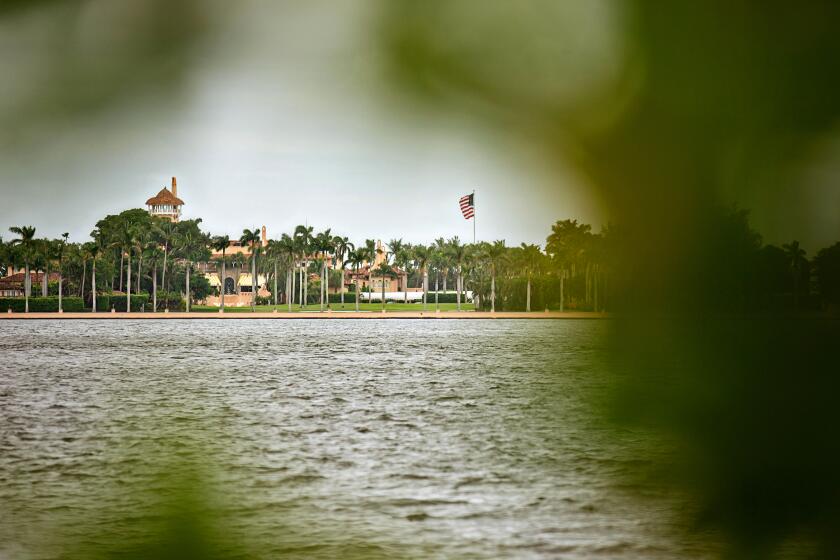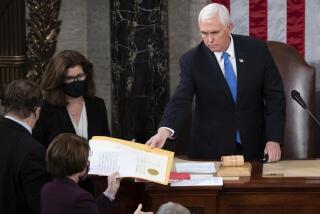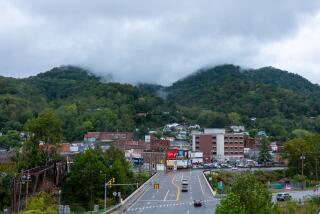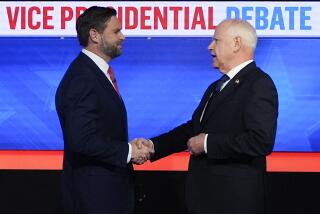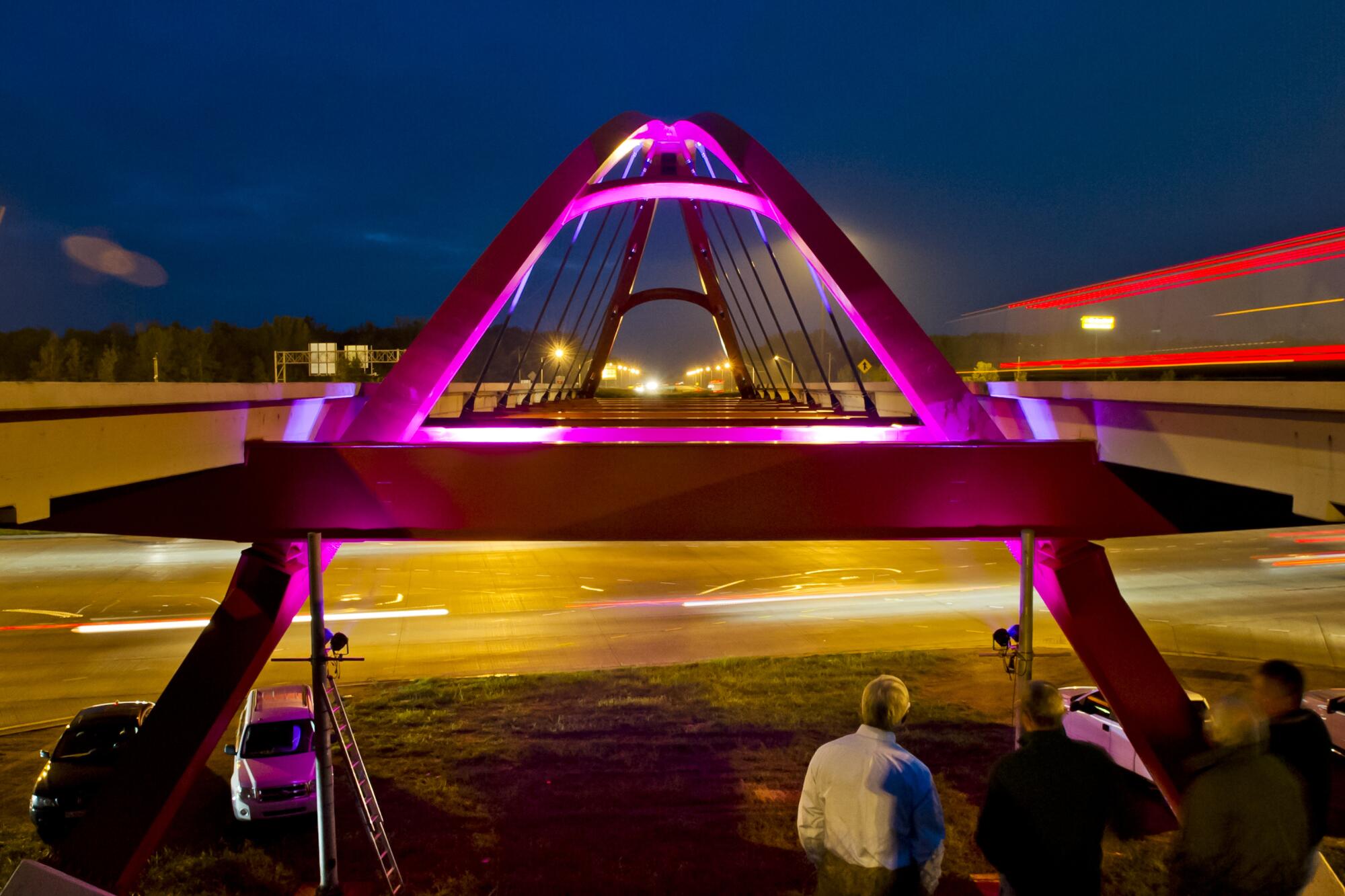
COLUMBUS, Ind. ‚ÄĒ The welcome sign on State Road 46 promises ‚ÄúUnexpected‚ÄĚ and ‚ÄúUnforgettable.‚ÄĚ It stands above an outsize tribute to NASCAR champion Tony Stewart, with 10 full lines listing the accomplishments of the hometown racing hero nicknamed ‚ÄúSmoke.‚ÄĚ
A smaller metal plate was added after the 2016 election. ‚ÄúHometown of Michael R. Pence,‚ÄĚ reads the three-line tribute. ‚ÄúUnited States Vice President.‚ÄĚ
The marker for this Indiana city’s most famous son hadn’t been up long when the phone calls to City Hall began. Some people wanted to know why the sign wasn’t bigger. Others wondered whether Pence merited a sign at all.
The vice president who likes to say he is ‚Äúa Christian, a conservative and a Republican, in that order,‚ÄĚ claims deep roots and loyalties in the small, ambitious city of about 48,000 where he grew up. But in an adulthood that has taken him mostly to Indianapolis and Washington, he returns now to a hometown growing in unexpected and often progressive directions.
The values that molded Pence, a former congressman and Indiana governor, first loom into view on the drive into Columbus. Billboards decry the evil of abortion. One, awash in flames, suggests passersby have two choices: the Holy Bible or an eternity in hell.
About this series
Even in a pandemic, candidates spend much of their time campaigning in one town after another. But what is the America they’ve seen from their own front doorstep? In this series, Times reporters explore the communities the candidates have called home.
Campaign signs that read ‚ÄúJesus 2020‚ÄĚ seem as prevalent as any on the expansive lawns north of Columbus‚Äô downtown. To the faithful over at the Moose Lodge car rally and outside the evangelical church where Pence still drops in, the vice president embodies what one construction worker called ‚Äúthe beliefs that we hold dear.‚ÄĚ Added Brian Shelton, getting ready to hop on his Harley-Davidson after church services: ‚ÄúGod, guns and freedom. You know?‚ÄĚ
Though those imperatives still unite much of Columbus, the insular city that Pence mostly left behind after his 1977 high school graduation has seen its politics bending, slowly but steadily, along a more liberal arc.
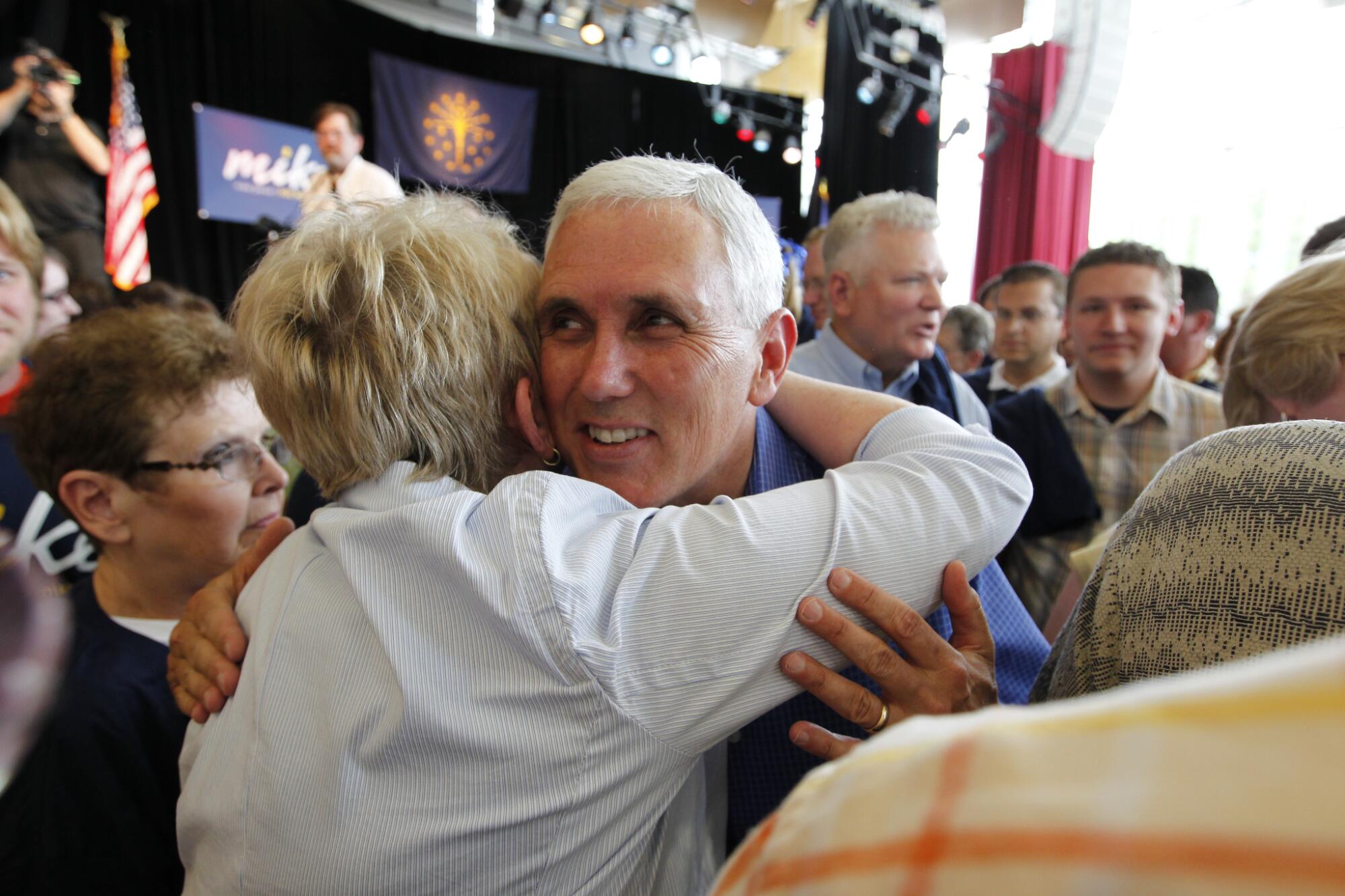
Columbus’ population has grown by more than 80% since he left, with foreign workers streaming into one of the most manufacturing-intensive counties in America. And the city government has rejected some of the hard-right social conservatism that Pence has made his signature.
As the state‚Äôs governor from 2013 to 2017, Pence signed a law that advocates said would allow businesses to deny service to gays and lesbians; Columbus parried with an ordinance protecting the LGBTQ community from discrimination. Pence approved a ban on immigration by refugees from Syria; his old church fought to let them in. And while Pence railed about the ‚Äúsocietal collapse‚ÄĚ that would follow if traditional marriage withered, his hometown and its biggest company approved employee benefits for same-sex spouses.
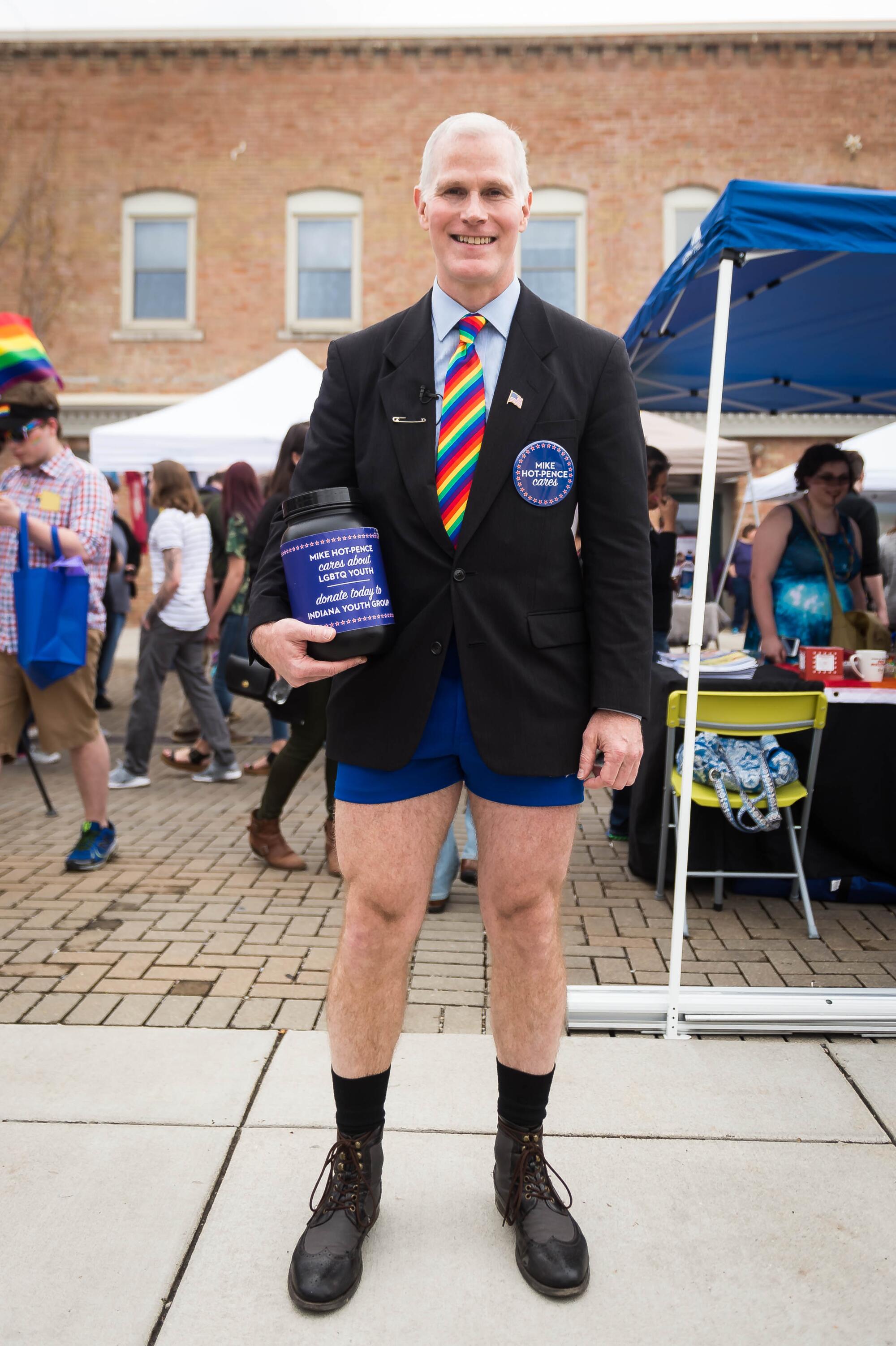
Last year, Columbus elected its first Democratic-majority City Council in 36 years. And this spring, as President Trump and Pence decried the lawlessness of protesters following the death of George Floyd, Republican Mayor Jim Lienhoop marched alongside Black Lives Matter demonstrators in downtown Columbus.
A year after Pence left Indiana to join Trump in the White House, a local teenager said she was troubled that the world would view Columbus as a peevish, unaccepting place. So Erin Bailey used her high school senior project to organize the city’s first LGBTQ Pride Festival.
A guest of honor was ‚ÄúMike Hot-Pence.‚ÄĚ The Pence doppelganger sported the veep‚Äôs white buzz cut and blue hot pants. He carried a plastic barrel to collect donations for gay and lesbian youth.
The mid-20th century Columbus of Pence’s youth was a more monochromatic place. In the 1970s, 98% of its 26,000 residents were white, compared with 78% in 2019. A huge percentage worked at Cummins Engine Co., which would eventually become the largest independent maker of diesel engines in the world.
Churches united the small community, and Pence’s parents, three brothers and two sisters helped fill the pews at St. Columba Catholic Church. The family’s Irish Catholic roots conjured a powerful bond with John F. Kennedy, the first Roman Catholic in the White House, and young Mike would later recall that he kept a stash of Kennedy memorabilia.
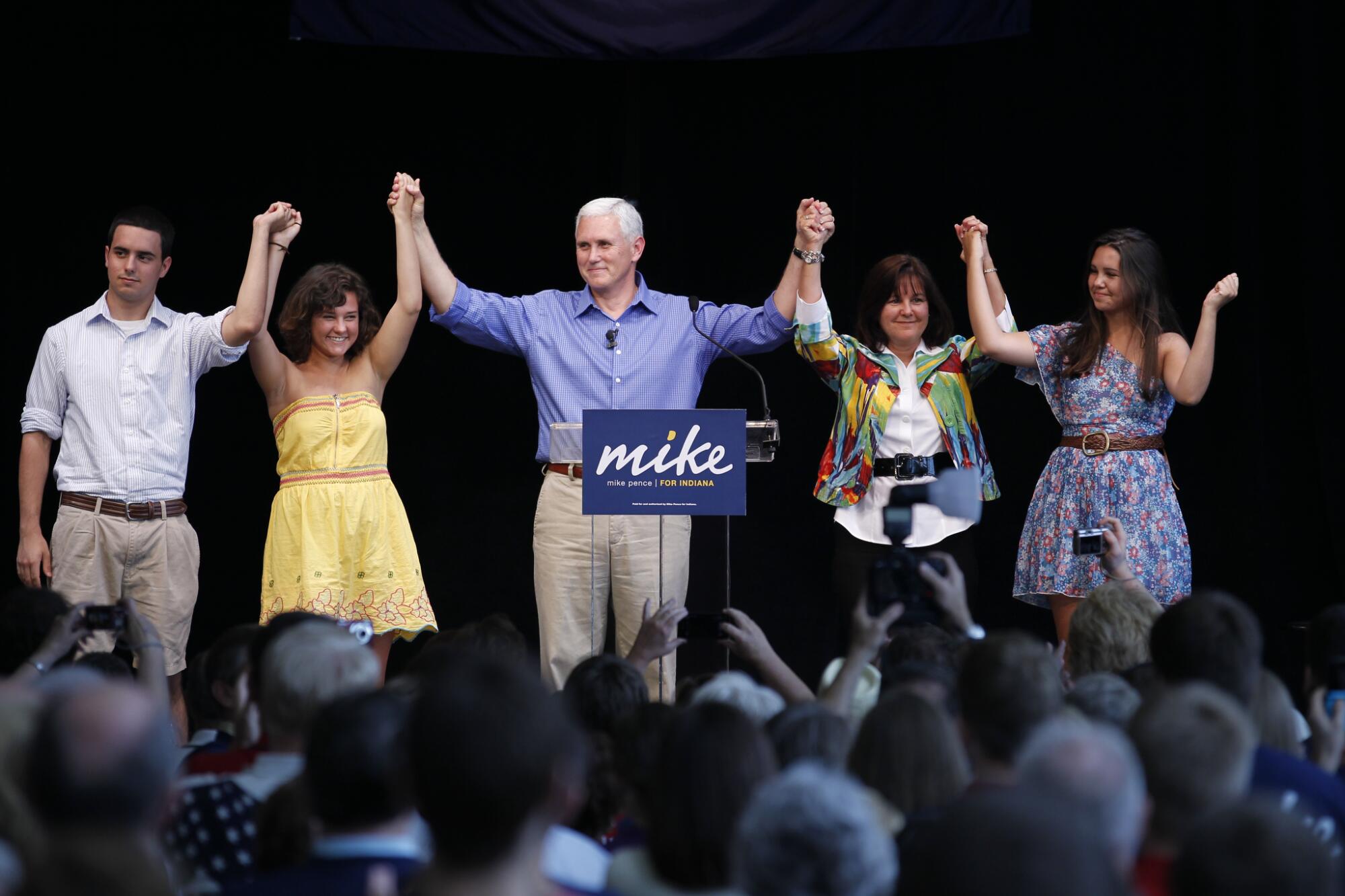
It was in 1977 that his watershed spiritual and ideological transformations began, after he left Columbus for Hanover College, an hour south. The first revelation came when he attended a Christian music festival during his freshman year.
‚ÄúI gave my life to Jesus Christ,‚ÄĚ he later said. ‚ÄúAnd that‚Äôs changed everything.‚ÄĚ
A political epiphany arrived three years later when, as a senior, a history professor introduced Pence to libertarianism, supply-side economics and the argument for small government. Though he voted for Jimmy Carter in 1980, a nod to the Democratic president’s evangelical roots, he soon after became a devotee of Ronald Reagan.
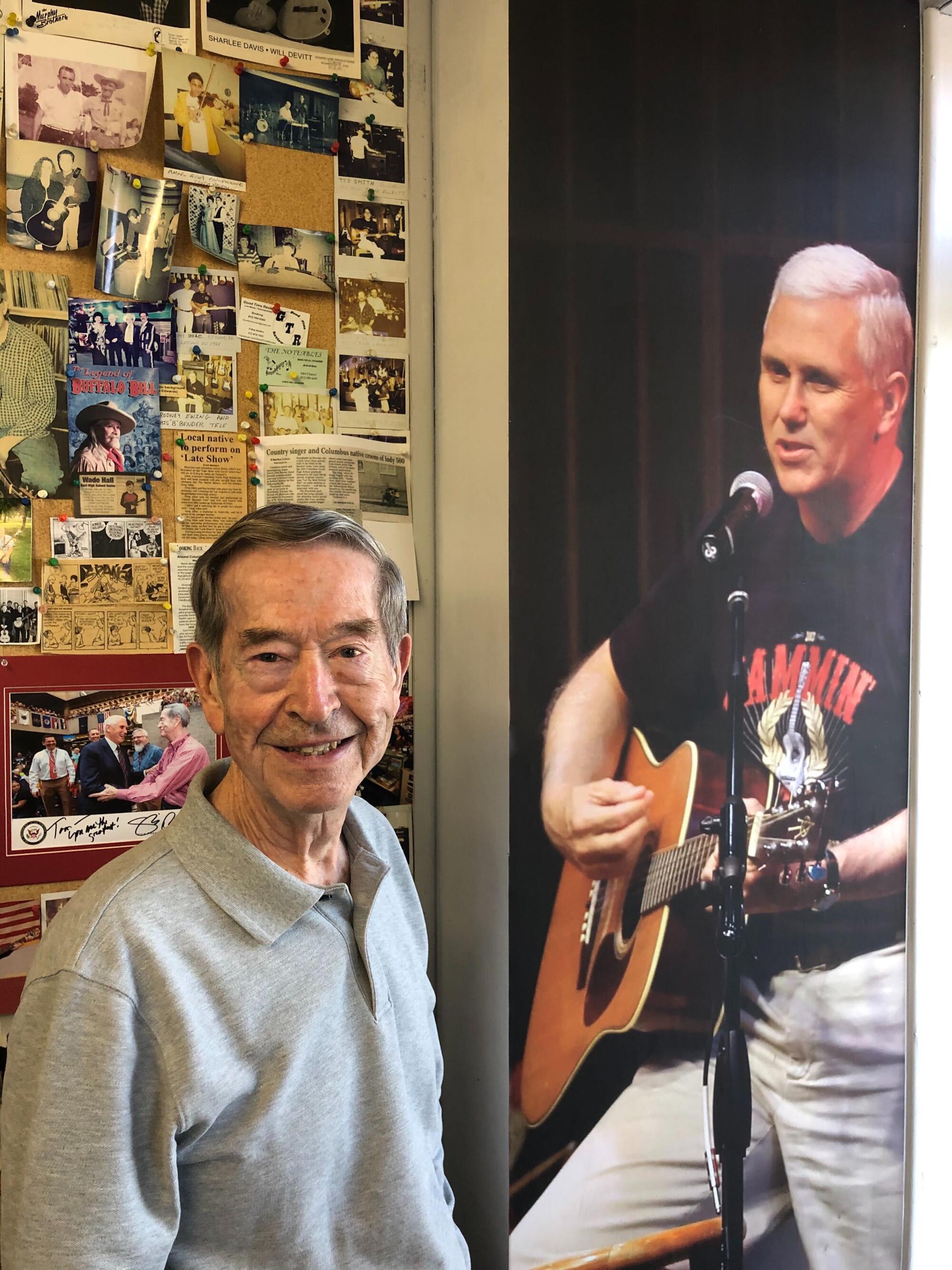
On the campaign trail, Pence liked to muse about his roots in a small community where he had a ‚Äúcornfield in the backyard.‚ÄĚ It might have sounded as if he were raised on a farm, but the Pence family lived in one of the expansive tract homes filled by upper-middle-class families near the center of town. The home happened to back up to farmland.
One constant in the Columbus of Pence’s youth and of 2020 has been Tom Pickett. The 89-year-old music store owner has been lending and selling instruments to the city’s young people for more than 60 years. Pickett taught a teenage Pence to play guitar. Today, a larger-than-life photo of the vice president greets visitors when they enter the store.
Pence’s office did not respond to requests to discuss how his hometown shaped him.
Pickett sees his onetime student and President Trump as the guardians of Columbus‚Äô old-time values and fighters against ‚Äúthe socialists and the communists.‚ÄĚ
The music man has heard people mock Pence for adhering to the ‚ÄúBilly Graham Rule‚ÄĚ ‚ÄĒ eschewing drinks, meals or meetings alone with a woman other than his wife.
‚ÄúPeople get a good laugh, a big hoo-hah,‚ÄĚ said Pickett, shaking his head. ‚ÄúBut he is the kind of person who won‚Äôt let things happen against his better values.‚ÄĚ
::
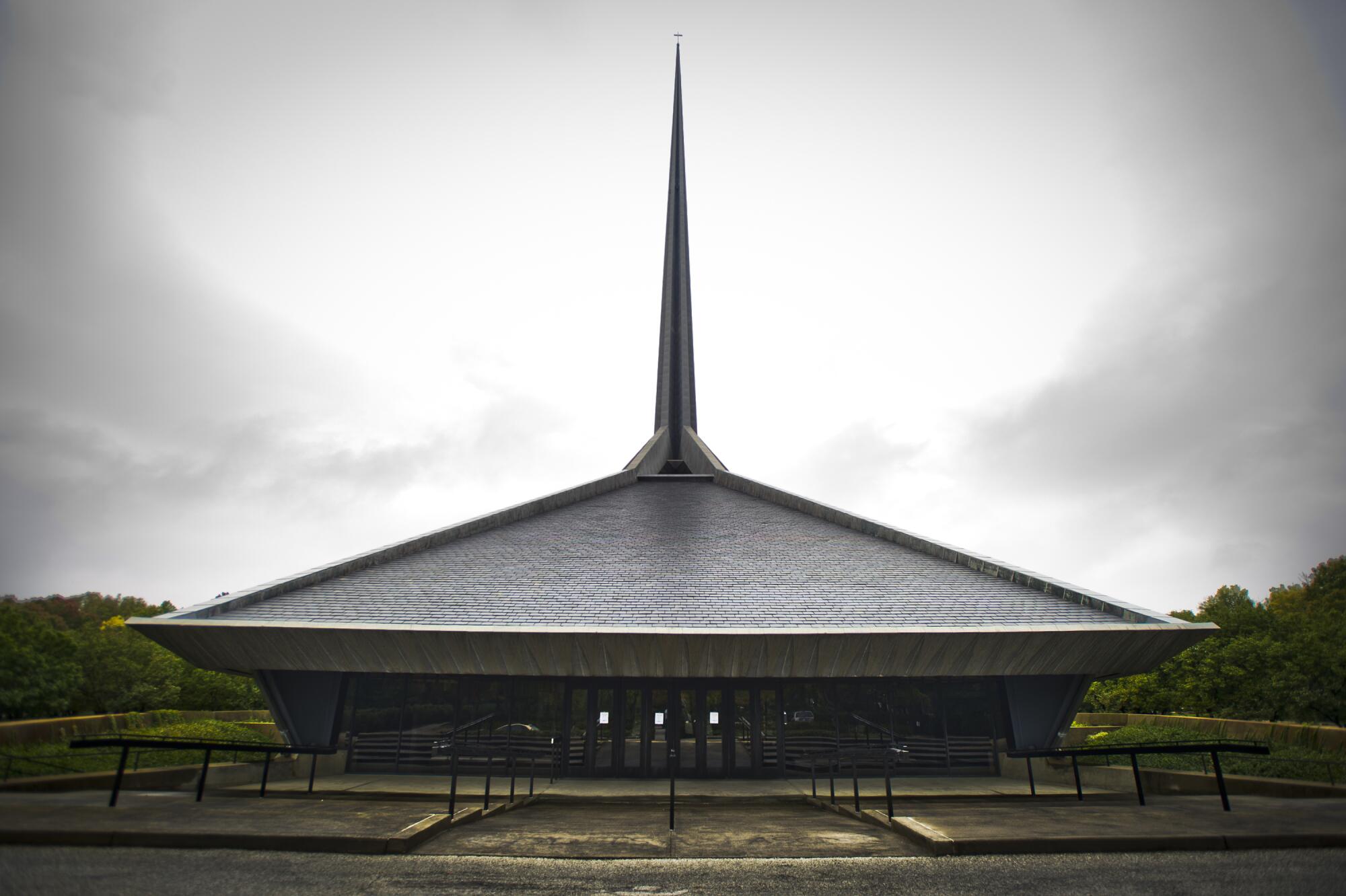
Sleek and whimsical by design, Columbus looks nothing like any other small city in America.
It overflows with some of the celebrated modernist architecture one J. Irwin Miller brought to town. The man who led Cummins ‚ÄĒ the biggest company in Columbus ‚ÄĒ from the 1940s until 1977, Miller believed the business needed to do more than make money. He pushed for it to promote the humanities and architecture, in particular, ‚Äúto make us truly human in the best sense of the word.‚ÄĚ
The iconoclastic industrialist succeeded so famously in luring world-renowned architects that by 1991, the American Institute of Architects put Columbus on a list with New York, Chicago and San Francisco as one of the nation’s leading centers of architectural innovation and design.
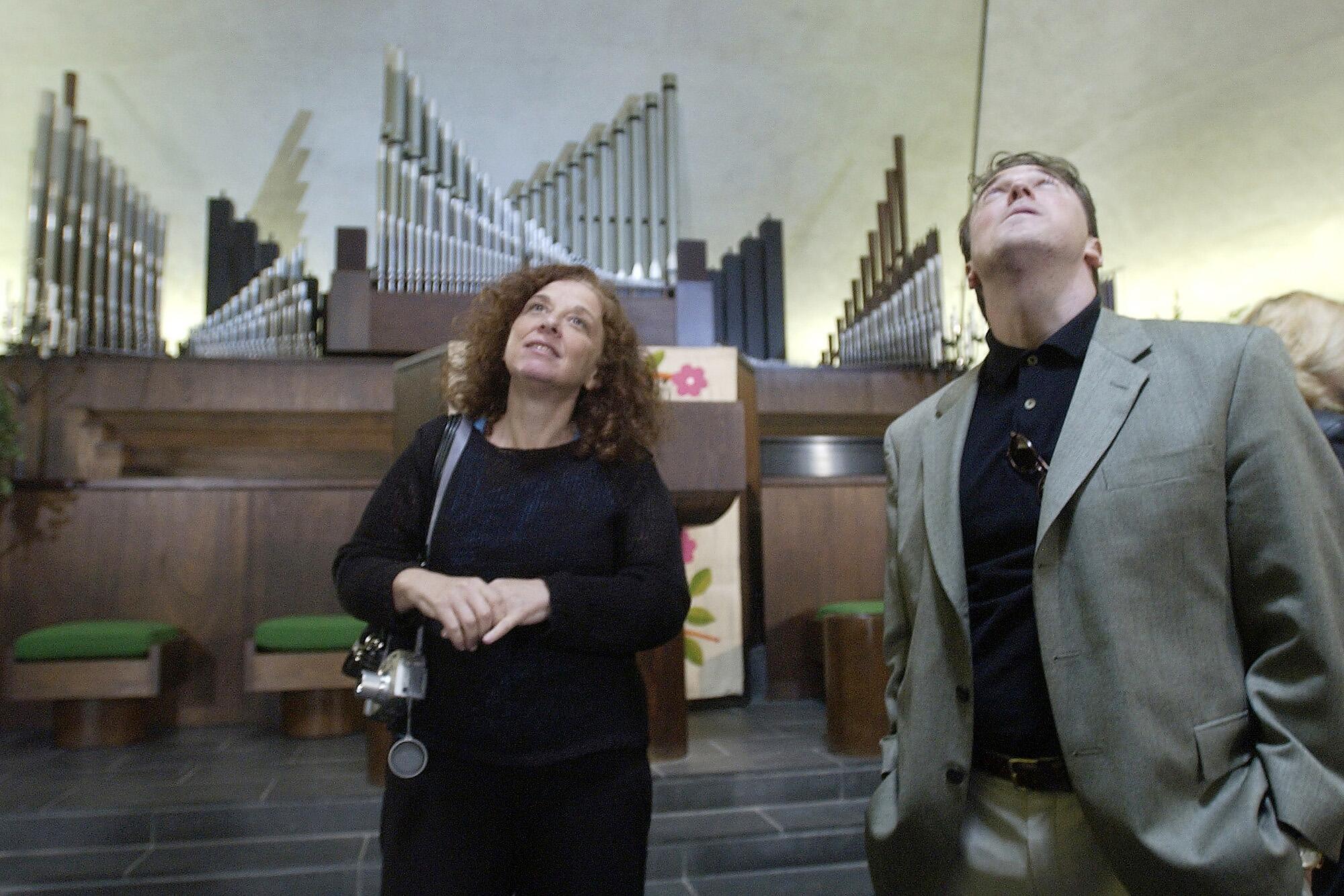
Columbus had the audacity, in the 1950s, to open a bank building with glass walls instead of the de rigueur brick or stone. One of its largest churches seats the faithful in the round, looking down on the pulpit, not consigned to look up at their minister on high.
The city-builder’s expansive worldview extended to politics. In the early 1960s Miller ordered that Cummins hire more minority executives, then set about overturning Columbus’ racially restrictive housing laws, so the newcomers could find a place to live. (Pence’s older brother Ed retired from the company three years ago as a top executive.)
Miller believed even a small, Midwestern city could be open-minded and intellectually stimulating and attract the best and the brightest. The Rev. Martin Luther King Jr. called him ‚Äúthe most socially responsible businessman in the country.‚ÄĚ Esquire magazine admired his sensibilities so much that in 1967, with President Lyndon B. Johnson slouching in the polls, it featured Miller on its cover with the headline: ‚ÄúThis man ought to be the next President of the United States.‚ÄĚ
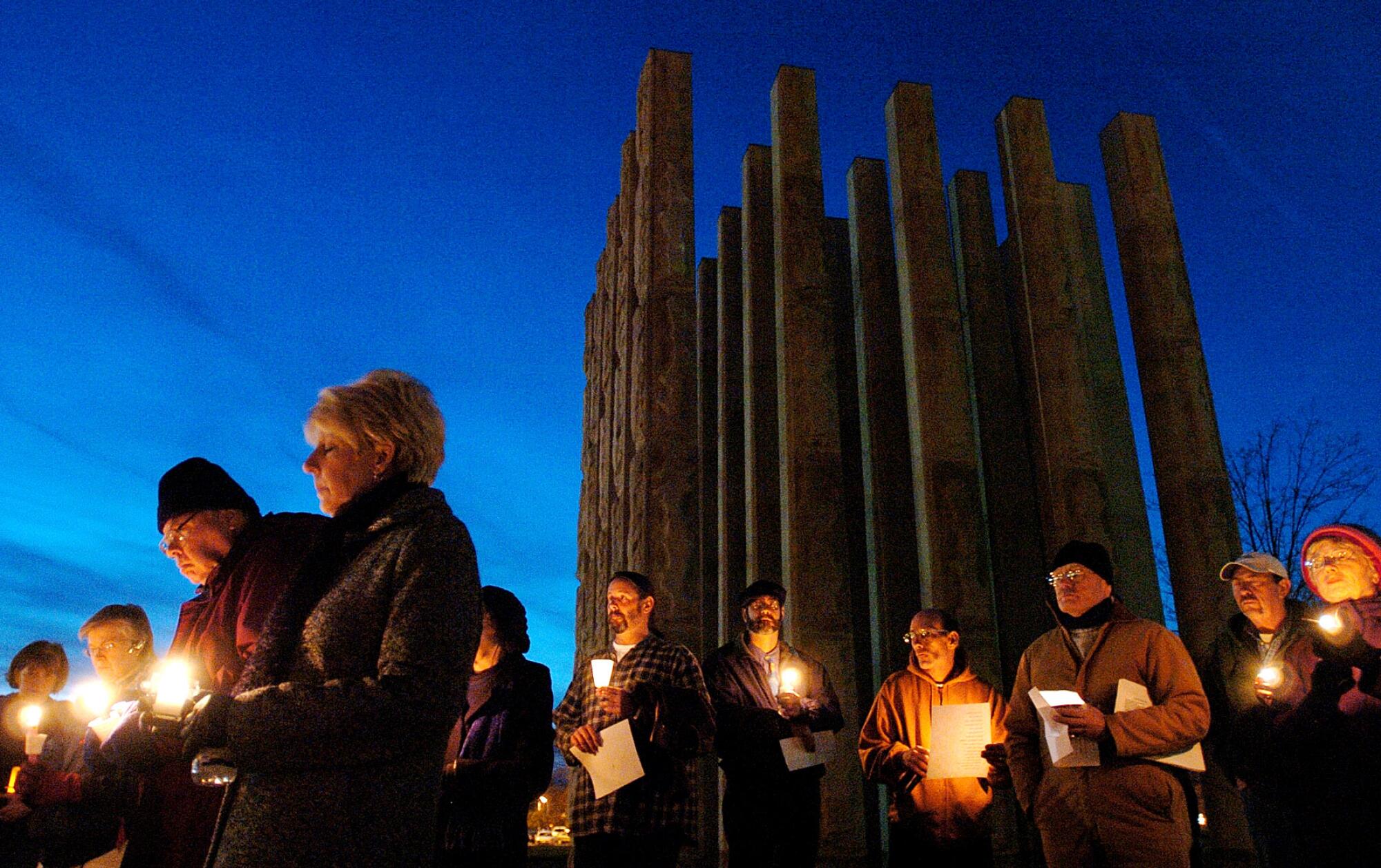
::
Even with its progressive crosscurrents, Columbus’ Bartholomew County has remained faithfully Republican in presidential elections. John McCain won by over 10 percentage points here in 2008, though he narrowly lost the state to Barack Obama. Four years ago, Trump and Pence stomped Hillary Clinton and Tim Kaine in the county by more than 2 to 1.
While Trump‚Äôs America-first nativism appears to be a big seller with many here, Pence‚Äôs culture-warrior style of Republicanism ‚ÄĒ with fights over LGBTQ and immigrant rights ‚ÄĒ departs from the centrism represented by Miller and by Indiana‚Äôs past Republican luminaries.
This is how the 2020 election looks from the towns that are home to or key to understanding Donald Trump, Joe Biden, Kamala Harris and Mike Pence.
Previous big names in the state’s GOP included Sen. Richard G. Lugar, renowned for his ability to work with Democrats, and Mitch Daniels, an avatar of wonkiness and restraint, who preceded Pence in the governor’s office.
Pence‚Äôs born-again experience was simultaneously an embrace and a rejection of his roots. Reared Roman Catholic, he said he only found a more ‚Äúpersonal‚ÄĚ relationship with Jesus Christ when he became evangelical.
The idea that he wasn‚Äôt fully Christian until he left the Catholic Church rankles some at the Columbus parish that his mother and brothers still attend. Father Clement T. Davis of St. Bartholomew Catholic Church recalls that another priest ‚Äúblew up‚ÄĚ at Pence years ago for suggesting he only became truly Christian in college.
‚ÄúI think he learned from that experience,‚ÄĚ Davis said, ‚Äúand toned it down a little bit after that.‚ÄĚ
There are plenty of St. Bartholomew‚Äôs parishioners who embrace Trump and his No. 2. At a recent Sunday morning Mass, a couple described how ‚Äúthrilled‚ÄĚ they were to have Pence pushing for a Supreme Court that could overturn legalized abortion.
But even at the Pence family‚Äôs home parish, the strains of a more progressive Catholicism ring out, as the priest proclaims that the town‚Äôs immigrant workers, some of whom are in the country illegally, are ‚Äúgifts from God,‚ÄĚ and promotes voting with a quote from John Lewis, the late Democratic congressman from Georgia.
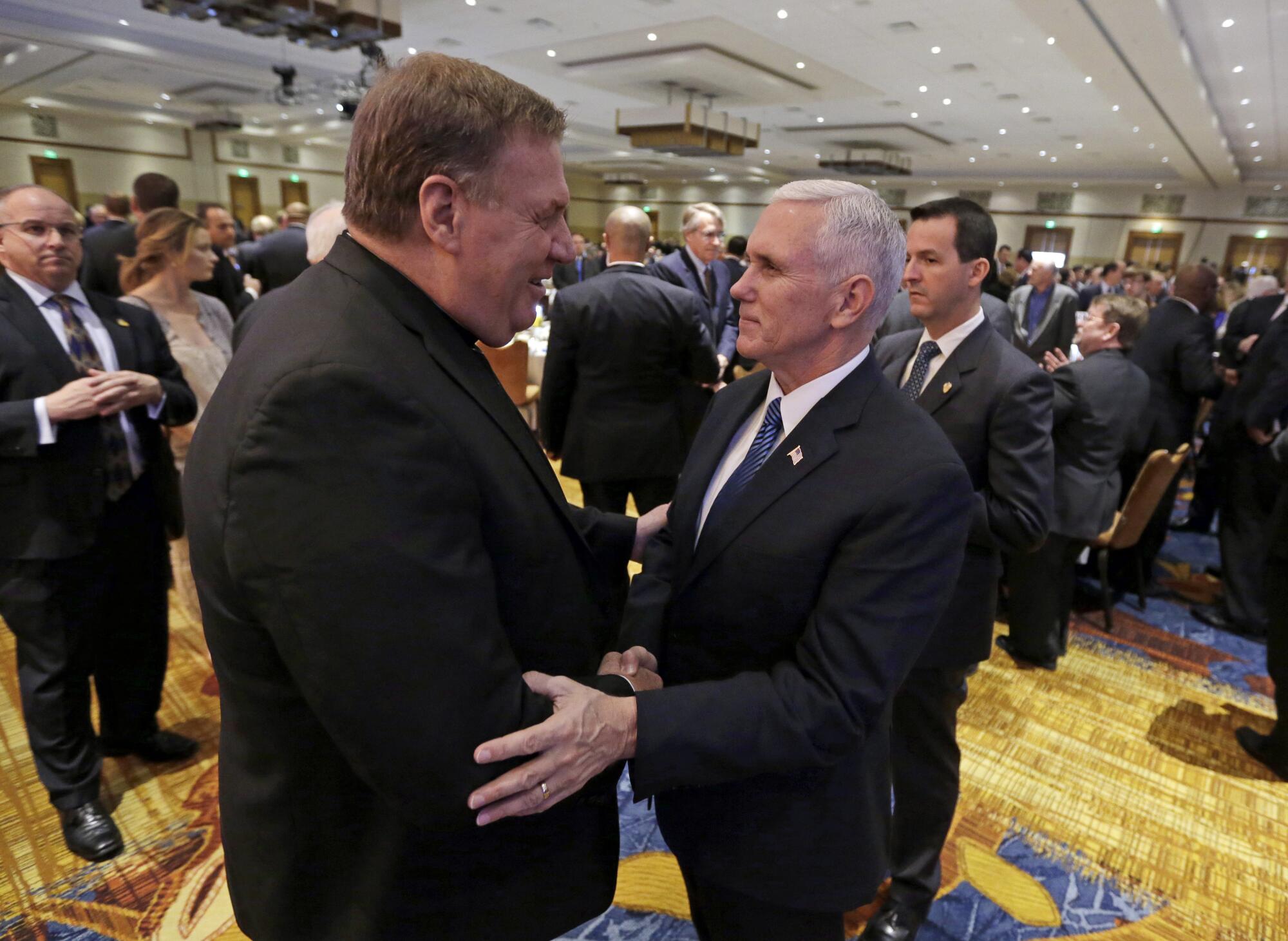
Pence’s hard line on immigration has put him at odds with many in modern Columbus, including people of faith.
A notable showdown came in 2015, when the then-governor blocked the resettlement of Syrian refugees in Indiana. He said he doubted the Muslim newcomers could be adequately screened to ensure Hoosiers didn’t become the target of terrorist attacks.
The archbishop of Indianapolis, Joseph W. Tobin, met with Pence to plead with him to help the migrants find safe harbor. He presented the case of one family, fleeing terrorism, that had been screened for almost two years and yearned to move close to their relatives in Indiana.
Pence would not budge, saying the security of his citizens was paramount. When Tobin (now a cardinal) was asked by the New Yorker‚Äôs Jane Mayer whether he could think of a Christian argument for rejecting the family, Tobin said: ‚ÄúNo.‚ÄĚ
Pence has parted with Columbus’ moderate sensibilities and his own past beliefs on another issue of critical importance here: trade. This is a metropolitan region more reliant on exports than any other in the nation.
A career-long free-trade advocate until he signed on with Trump, the vice president has stood mute as the president has ramped up trade sanctions and tariffs, including on foreign aluminum and steel.
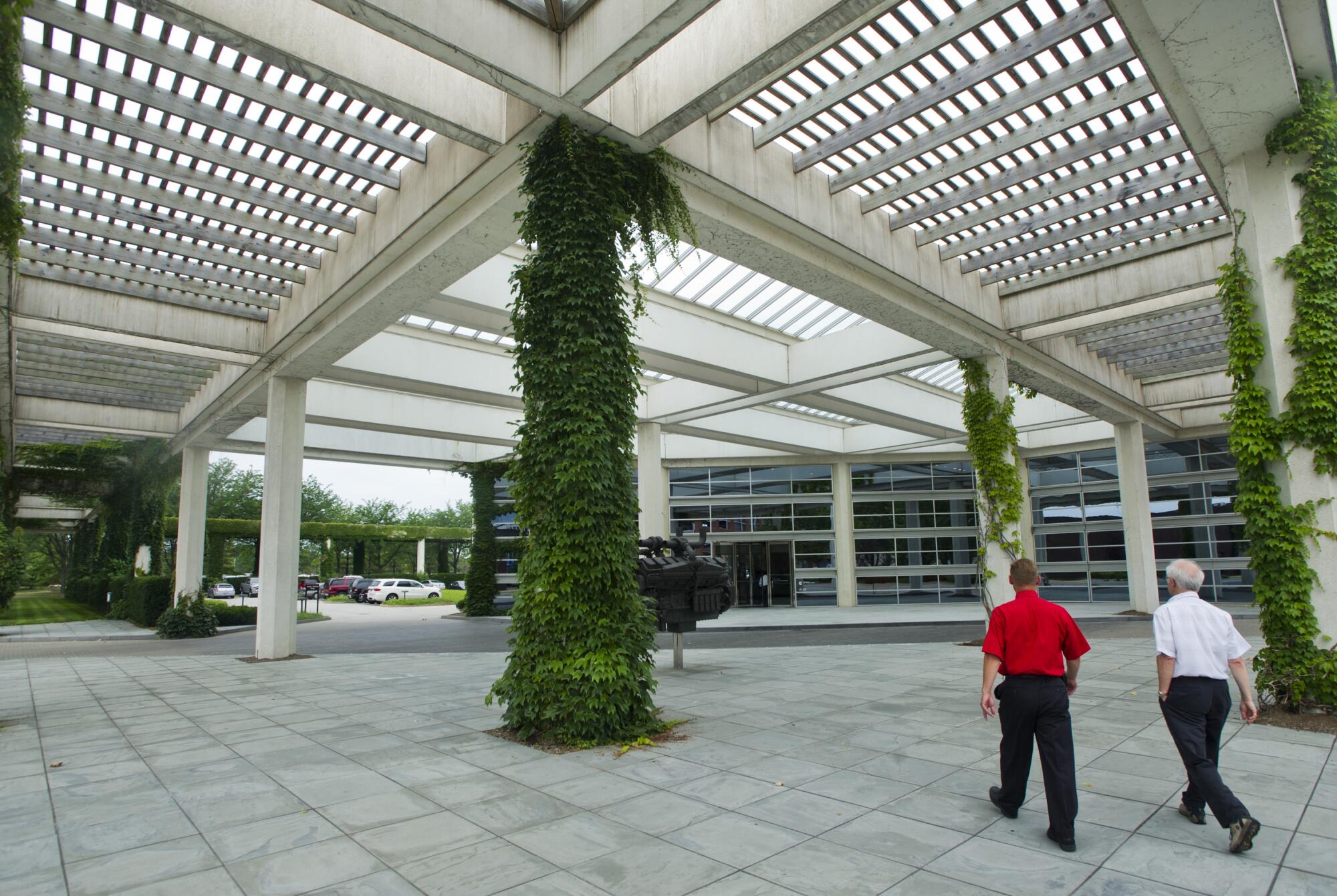
Cummins Chief Executive Tom Linebarger protested that the new tariffs cost the company more than it gained when the administration passed a substantial corporate tax cut. Said Linebarger: ‚ÄúOur net taxes are higher now.‚ÄĚ
Perhaps Pence’s sharpest departure from Columbus’ expansive worldview came in 2015. That’s when he signed a state law called the Religious Freedom Restoration Act.
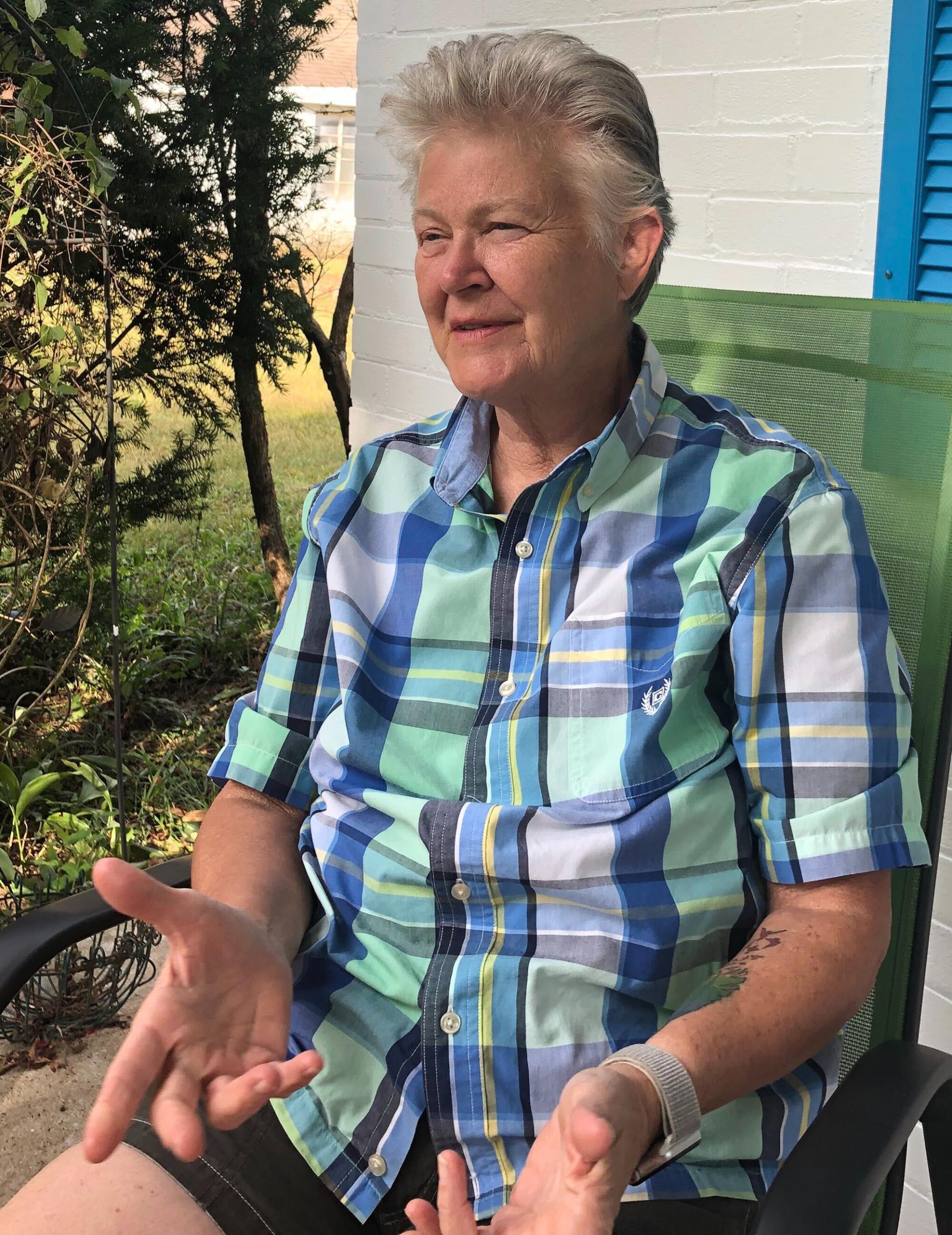
Backers of the law said it was designed, among other things, to allow Christian bakers, florists and photographers to avoid punishment if they declined to serve people holding gay and lesbian weddings. What supporters saw as a law protecting individuals from being forced to violate their religious beliefs, critics viewed as nothing but outrageous identity discrimination.
Indiana faced a broad boycott and condemnation from the CEOs of big businesses like Apple and Salesforce. The head of the online ratings company Angie’s List cancelled a $40-million expansion of its Indianapolis headquarters.
The state passed clarifying legislation to specify that it was not condoning discrimination. But that just infuriated conservatives who viewed the law as righteous.
Back in Columbus, the City Council approved an ordinance making LGBTQ individuals a ‚Äúprotected class.‚ÄĚ The rebuke of the city‚Äôs most famous political son was all the more remarkable because all seven City Council members were Republicans.
When asked what he would say today to the vice president about that stumble, Columbus‚Äô GOP mayor shook his head. ‚ÄúYou never get a second chance to make a first impression,‚ÄĚ Lienhoop said. ‚ÄúSo be careful.‚ÄĚ
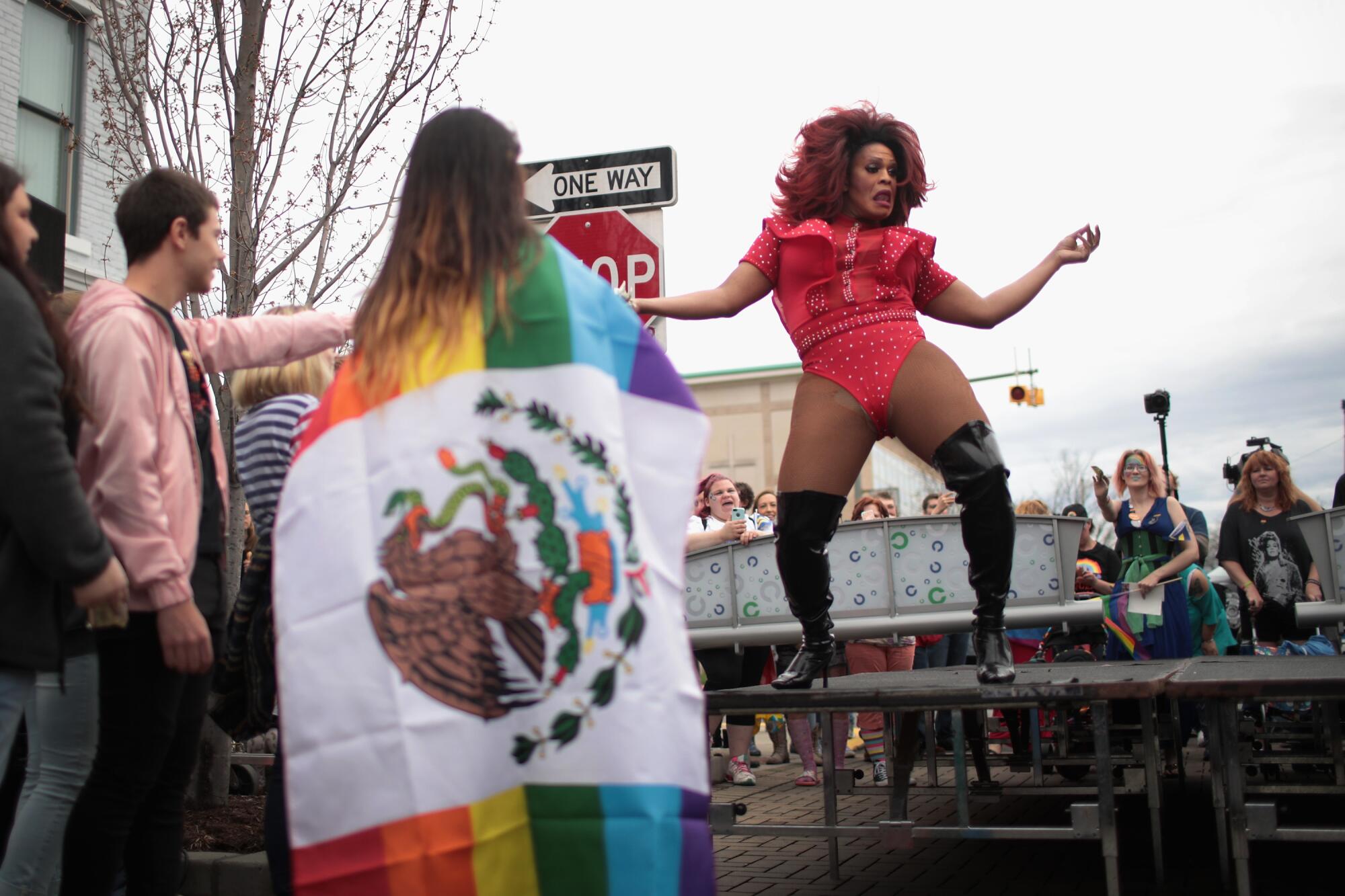
More to Read
Get the L.A. Times Politics newsletter
Deeply reported insights into legislation, politics and policy from Sacramento, Washington and beyond. In your inbox three times per week.
You may occasionally receive promotional content from the Los Angeles Times.
